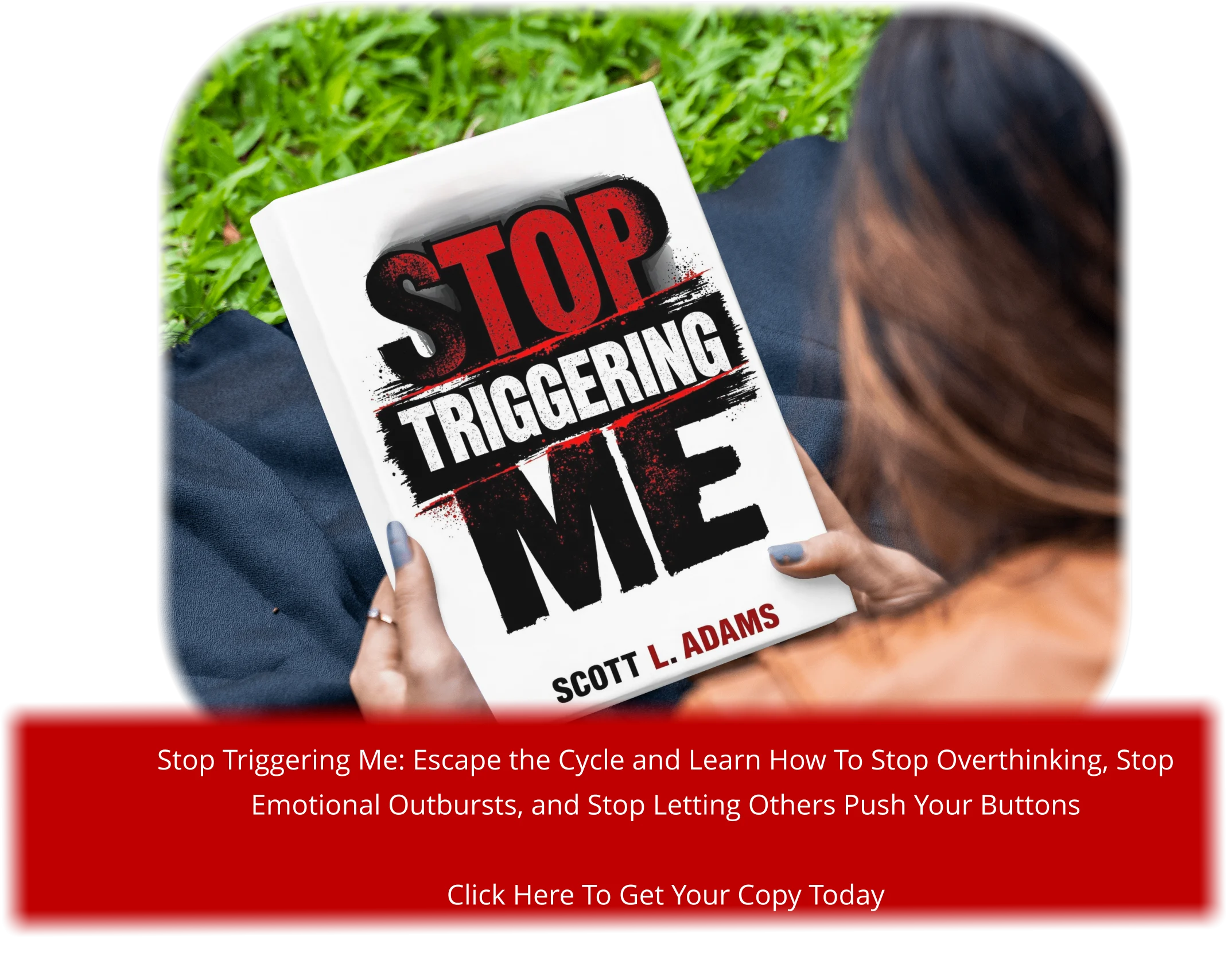Have you ever noticed how you keep reacting the same way, even when you know it’s not helpful? I’ve been there too. Take Mike, for example. He’s a friend of mine who always vowed to stop stress-eating chocolate. Yet, every time he felt overwhelmed, he found himself reaching for that candy bar. Sound familiar?
It’s not that Mike didn’t want to change. He just couldn’t figure out why his behavior kept repeating itself. Research shows that habits operate on autopilot, driven by cues and rewards. For Mike, stress was the cue, and the chocolate was the reward. Breaking this cycle isn’t easy, but it’s possible with the right approach1.
Understanding why we react the same way is the first step. It’s not about willpower alone; it’s about recognizing the patterns and replacing them with healthier ones. Studies suggest that simplifying new behaviors can make them easier to adopt over time2.
So, if you’re tired of falling into the same old patterns, you’re not alone. Let’s explore how to finally change those repetitive behaviors and create lasting habits.
Key Takeaways
- Habits are driven by cues and rewards, making them hard to break.
- Replacing a behavior is more effective than simply stopping it.
- Simplifying new habits can help integrate them into daily life.
- Long-term focus is essential for lasting change.
- Persistence is key, as habits take time to form and replace.
Understanding Your Emotional Reactions
Have you ever felt stuck in a cycle of reacting the same way, even when you know it’s not helping? I’ve been there too. Our emotional reactions often feel automatic, like they’re out of our control. But understanding why they happen is the first step toward lasting change.
Identifying Emotional Triggers
Emotional triggers are the cues that spark our reactions. They can be external, like a stressful work deadline, or internal, like a feeling of inadequacy. Research shows that generalized triggers, such as isolation or devaluation, often lead to habitual responses like anger or overeating3.
To identify your triggers, start by paying attention to moments when you feel overwhelmed. What’s happening around you? What thoughts are running through your mind? Journaling can help you spot patterns and take the first step toward breaking the cycle.
Recognizing the Habit Loop
Our emotional reactions are part of a habit loop: cue, behavior, and reward. For example, stress might cue you to reach for comfort food, and the temporary relief becomes the reward. This loop is processed in the brain thousands of times faster than intentional behavior3.
Understanding this loop is crucial for mental health. By recognizing the cue and the reward, you can start to replace the behavior with something healthier. For instance, instead of stress-eating, you might take a short walk or practice deep breathing.
It’s not about willpower—it’s about creating new associations. Repeating a positive behavior several times a day for about six weeks can help develop a conditioned response3. This approach empowers you to take deliberate steps toward change.
The Science Behind Habit Formation
Ever wonder why certain actions feel automatic, even when you want to change? It’s not just about willpower—it’s rooted in the way our brains work. Habits are formed through a loop of cues, behaviors, and rewards, a process deeply tied to our brain’s structure4.
How Cues, Behaviors, and Rewards Interact
Our brains are wired to seek efficiency. When a cue triggers a behavior that leads to a reward, the brain creates a shortcut. For example, feeling anxiety might cue you to scroll through your phone, and the distraction becomes the reward. This loop is processed in the basal ganglia, a part of the brain that handles automatic behaviors4.
Research shows that dopamine, the “feel-good” chemical, reinforces this loop. Even negative habits, like stress-eating or procrastinating, feel rewarding because they release dopamine. This makes it hard to stop, even when we know it’s not good for us4.
Why Habits Are Hard to Break
Breaking a habit isn’t just about stopping a behavior—it’s about rewiring your brain. Studies show that habits become automatic after about 66 days of repetition5. This means that even simple actions, like checking your phone, can become deeply ingrained.
Common struggles like anxiety or poor sleep can reinforce these patterns. For instance, lack of sleep weakens self-control, making it harder to resist familiar cues4. Understanding this science helps explain why change feels so challenging.
But there’s hope. By focusing on automaticity—like replacing a negative behavior with a positive one—you can create new, healthier loops. With support and persistence, lasting change is possible5.
Strategies for Breaking bad emotional habits
Changing how you respond to triggers doesn’t have to feel impossible. I’ve learned that small, intentional steps can make a big difference. The key is to focus on replacing negative behaviors with positive ones, creating reward systems that work, and building consistency over time. Let’s dive into practical strategies that can help you make lasting progress.
Replacing Negative Behaviors with Positive Ones
When you notice a trigger, like stress or frustration, it’s the perfect moment to pause. Instead of reaching for that candy bar or scrolling endlessly, try a healthier alternative. For example, take a short walk or practice deep breathing. Research shows that substituting a behavior is more effective than simply trying to stop it6.
Start small. If stress-eating is your go-to, keep healthy snacks on hand. Over time, these small changes can add up. Remember, it’s about creating new associations that feel rewarding in the moment7.
Establishing Reward Systems That Work
Rewards are powerful motivators. When you successfully replace a negative behavior, celebrate it. For example, if you choose to meditate instead of stress-eating, treat yourself to something you enjoy, like a favorite podcast or a relaxing bath. This reinforces the positive change8.
Make your rewards meaningful. If scrolling social media is your trigger, reward yourself with a few minutes of reading or a creative activity. Over time, these rewards will help you stay motivated and focused on your progress.
Building Consistency Over Time
Consistency is the foundation of lasting change. Start by setting small, daily goals. For example, commit to replacing one negative behavior each day. Over time, these small wins will build momentum7.
Track your progress. Use a journal or an app to note your triggers and how you responded. This helps you see patterns and celebrate your growth. Remember, change takes time, but every step forward counts8.
Implementing Practical Steps to Change Your Behavior
Have you ever felt like changing a behavior is too complicated to even start? I’ve been there too. The good news is, simplifying the process can make a huge difference. When I decided to replace my old routine with something healthier, I realized that small, manageable steps were the key to lasting impact9.
Simplifying New Behaviors for Lasting Impact
Start by breaking down your goal into smaller actions. For example, if you want to stop stress-eating, replace it with a simple activity like drinking water or taking a short walk. Research shows that simplifying new behaviors makes them easier to adopt and maintain10.
I found that creating a list of preferred actions helped me stay focused. Instead of dwelling on what I shouldn’t do, I had a clear plan for what I could do instead. This shift in focus made the process feel less overwhelming.
Understanding the consequence of both old and new behaviors can also be a game changer. When I realized how much better I felt after a walk compared to stress-eating, it motivated me to stick with the new routine11.
Here’s a tip: Track your progress. Whether it’s in a journal or an app, noting your successes can boost your motivation. Small wins add up over time, and celebrating them keeps you moving forward9.
Remember, change doesn’t have to be complicated. By simplifying your approach and focusing on the positive, you can create a healthier routine that sticks.
Creating a Personalized Action Plan
Creating a plan tailored to your needs can make all the difference in overcoming repetitive patterns. I’ve found that breaking down the process into manageable parts helps me stay focused and motivated. Let’s explore how to craft a strategy that works for you.
Setting SMART Goals for Change
Start by setting SMART goals—specific, measurable, achievable, relevant, and time-bound. For example, instead of saying, “I want to stop stress-eating,” aim for something like, “I’ll replace stress-eating with a 5-minute walk three times a week.” This approach makes the challenge feel less overwhelming and more actionable9.
I’ve learned that small, incremental changes are key. Research shows that improving by just 1% each day can lead to significant long-term effects12. Celebrate each win, no matter how small, to stay motivated.
Identifying Specific Triggers and Barriers
Understanding your triggers is a crucial part of the process. For me, stress and boredom were the main culprits behind my old habit of reaching for unhealthy snacks. Journaling helped me spot these patterns and plan countermeasures13.
Don’t forget to enlist a friend or accountability partner. Having someone to share your journey with can make the challenge feel less lonely and more manageable. Together, you can brainstorm strategies to overcome setbacks and stay on track.
Remember, change is a process. By identifying barriers and planning ahead, you’ll be better prepared to face the challenge each day. Keep going—you’ve got this!
Mindfulness and Coping with Habit Changes
What if the key to lasting change lies in how you respond to your thoughts? I’ve found that mindfulness can be a game-changer when it comes to managing repetitive patterns. It’s not about fighting your impulses but understanding them. By bringing awareness to the moment, you can create space to choose a different response14.
Practicing Mindfulness Techniques
One of the most effective tools I’ve used is the RAIN method: Recognize, Allow, Investigate, and Nurture. When a craving or trigger arises, pause and recognize it without judgment. Allow the feeling to exist, then investigate what’s behind it. Finally, nurture yourself with compassion instead of criticism15.
This approach helps you see that cravings are temporary. Research shows that mindfulness can reduce the brain’s conditioned response to triggers, making it easier to break bad cycles16.
Embracing Self-Compassion During Setbacks
Change isn’t linear, and setbacks are part of the process. When I slip into old patterns, I remind myself that it’s a problem, not a failure. Self-compassion means treating yourself with the same kindness you’d offer a friend. It’s okay to take an hour to breathe and regroup when emotions feel overwhelming14.
Studies show that self-compassion reduces the shame and guilt that often reinforce negative behaviors. By practicing kindness toward yourself, you build resilience and make it easier to try again15.
Remember, mindfulness isn’t about perfection. It’s about progress. Even a few minutes of awareness each day can help you navigate the challenges of change with greater ease16.
Tracking Progress and Celebrating Small Wins
Tracking your progress might sound simple, but it’s a game-changer for lasting change. I’ve found that when I pay attention to my patterns, I can spot what’s working and what’s not. It’s like having a map for your journey—it keeps you on track and helps you adjust when needed17.
Monitoring Your Habit Journey
One of the best ways to stay consistent is by keeping a record. I use a journal to note my triggers and how I respond. It’s amazing how much clarity this brings. Apps can also be helpful, especially when they send reminders to your screen to stay focused18.
Social media doesn’t have to be a distraction. I’ve turned it into a tool for support by joining groups that share similar goals. Seeing others’ progress motivates me to keep going. It’s a great way to stay connected and inspired17.
Recognizing every cue that leads to progress is crucial. For example, if I feel stressed and choose to meditate instead of reaching for snacks, I celebrate that win. These small victories build momentum and make it easier to want change18.
- Track your progress daily to spot patterns and adjust your approach.
- Use apps or journals to stay organized and focused on your goals.
- Leverage social media for support and inspiration, not distraction.
- Celebrate every small win to stay motivated and committed.
Remember, change doesn’t happen overnight. By tracking your progress and celebrating each step, you’re building a foundation for long-term success. Every small win is a step closer to your goal17.
Conclusion
Change begins with understanding why we repeat certain behaviors, even when they no longer serve us. Throughout this article, we’ve explored the reason behind these patterns and how small, intentional steps can lead to lasting transformation. Whether it’s replacing stress-eating with healthier food choices or practicing mindfulness, every adjustment reflects a commitment to growth.
Remember, setbacks are part of the process. They’re not failures but opportunities to learn and refine your approach. Celebrate the small wins, like choosing a walk over a snack, as they build momentum toward your goals19.
Ultimately, the journey to change is deeply personal. Reflect on your reason for wanting to grow, and let it guide you. With persistence and the strategies we’ve discussed, you can pave the way for sustainable, positive change. Keep striving—you’ve got this!







